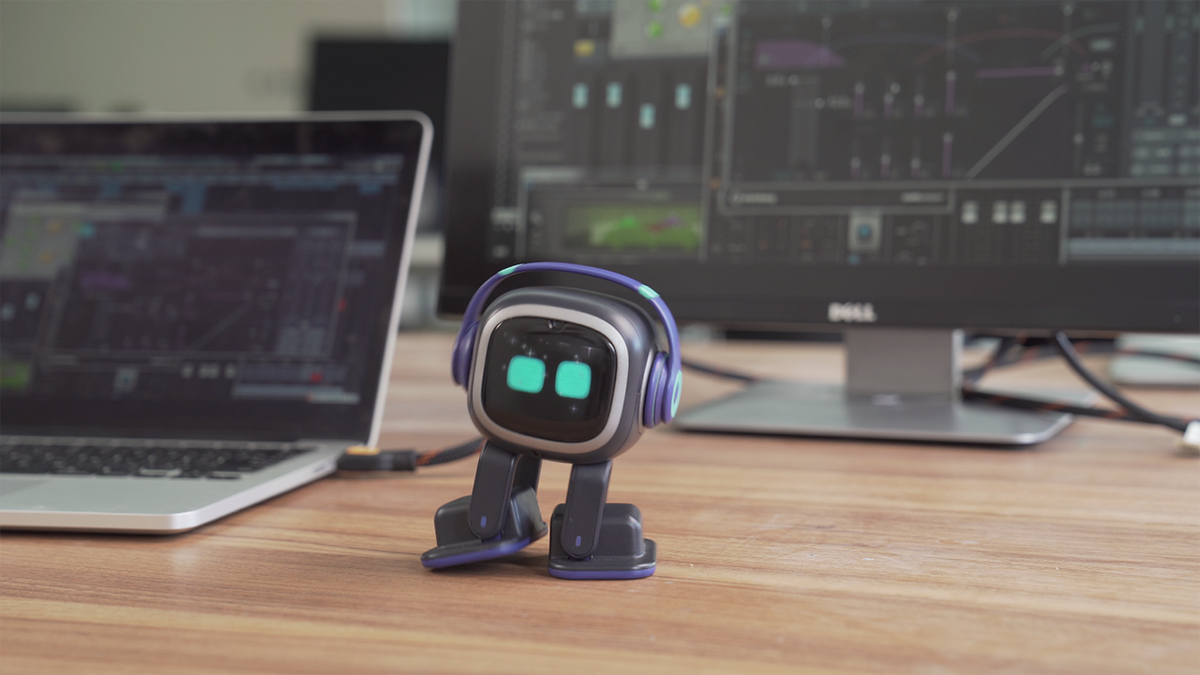‘Charismatic’ robots can boost human creativity, study finds
A recent study found robots that speak in a "charismatic" tone while directing a college class can boost creativity among humans. (SWNS)
Artificial intelligence could soon start replacing household pets — no vet bills required.
As various types of robots continue to hit the market, AI-powered "animals" have arrived on the scene as well.
One example is Go1, the world’s first intelligent quadruped robot "companion" that is developed by China's Unitree Robotics.
WHAT IS ARTIFICIAL INTELLIGENCE?
The robotic sidekick walks on all fours, much like a dog — but there’s no need for a collar or a leash.
Go1’s walking movements involve stability control, gait generation, motion control, navigation and obstacle avoidance, as well as learning and adaptation through AI, Unitree Robotics said in an email to Fox News Digital.

A Go1 AI-powered companion follows its owner on a walk outside. (UnitreeRobotics)
Go1 can follow the speed of its owner — whether the owner is traveling on a bike, on a skateboard or on foot — at up to 10 miles per hour, according to the company.
MIKO, THE AI ROBOT, TEACHES KIDS THROUGH CONVERSATION: ‘VERY PERSONALIZED EXPERIENCE’
The robotic pet has a super-sensing system that includes several fisheye binocular sensors and human recognition capabilities.
These enable it to follow its owner’s lateral peripheral vision.

Go1's super-sensing system features five sets of fish-eye stereo depth cameras and AI post-processing functions, the company says. (Unitree Robotics)
The company describes the robot’s power joint design as "ultra-lightweight and low noise."
Go1's total weight is about 26 pounds — and it can hold loads of up to 11 pounds, the company also says.

Unitree's Go1, described as the world’s first intelligent quadruped robot companion, displays its intelligent side-follow system. (Unitree Robotics)
Another robotic option
For people who prefer smaller "pets," LivingAI in China has developed EMO, a tiny AI-powered desktop pet.
The nearly 5-inch-tall robot is described as a mobile, expressive pet that can react to its owner with more than 1,000 facial expressions and movements, according to the website.
Using AI tech, the robot explores its surroundings, makes decisions on its own and interacts with its human.

The EMO desk pet, pictured here, displays over 1,000 different "expressions" on its face. (EMO/LivingAI)
Similar to a real pet, EMO evolves over time — in this case, through advanced internal sensors and AI processing models that give the little robot the ability to learn, communicate and "bond," according to the LivingAI website.
"AI pets cannot replicate the complex and rich experience of caring for a real animal."
EMO also can be programmed to turn on lights, set alarm clocks and celebrate special events such as birthdays and holidays, the company says.
Pros and cons
Dr. Harvey Castro, a Dallas, Texas-based board-certified emergency medicine physician and national speaker on AI in health care, weighed the pros and cons of the emergence of AI pets in a conversation with Fox News Digital.

EMO, pictured on the left, incorporates "fun features" such as dancing to music and even gaming, according to the LivingAI website. (EMO/LivingAI)
While robotic pets offer continuous companionship, low maintenance, elimination of allergy exposure and even mental health support, AI "companionship" can also be limiting, Castro said.
"AI pets cannot replicate the complex and rich experience of caring for a real animal," said Castro.
"Unlike real pets," he added, "AI pets don’t encourage owners to engage in physical activity, like walking or playing."
CLICK HERE TO SIGN UP FOR OUR LIFESTYLE NEWSLETTER
Castro also mentioned the potential risks related to data privacy and dependency on AI pets for companionship — which could lead to the neglect of real-life relationships, he said.

LivingAI also offers an EMO-charging station that the robot uses to charge itself, according to the company. (EMO/LivingAI)
"The long-term psychological and emotional effects of having AI pets, especially on children, are yet to be fully understood," Castro said.
The robotic pets "present a unique, beneficial alternative for companionship and can play a role in improving mental health," he added.
CLICK HERE TO GET THE FOX NEWS APP
"However, they should be seen as a partial replacement for real pets," Castro said.
"As AI technology advances, we must continuously evaluate the benefits and risks associated with AI pets."



